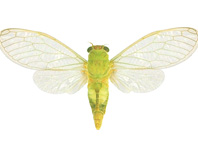Abstract
A new species of the xenodermatid snake genus Achalinus Peters, 1869 is described from Yunnan Province, Southwest China, based on a single male specimen. The new species is assigned to the genus Achalinus on the basis of absence of preocular and postocular, subcaudals arranged in single row, and results of phylogenetic analyses of mitochondrial DNA CO1 sequence data. Achalinus pingbianensis sp. nov. differs from its congeners by the combination of following morphological characters: absence of a loreal, internasals subequal to that between prefrontals and dorsal scales strongly keeled, 23 rows throughout. Currently, 13 species are in the genus Achalinus, further taxonomical and phylogenetic studies based on more extensive samples and more markers will help understand the cryptic diversity and clarify their interspecific relationships.
References
Boulenger, G.A. (1888) Description of two new snakes from Hongkong, and note on the dentition of Hydrophis viperina. Annals & Magazine of Natural History, Series 6, 7 (2), 43–44.
https://doi.org/10.1080/00222938809460874
Bourret, R.L. (1935) Notes herpétologiques sur l’Indochine française. VIII. Sur les Achalinus d’Indochine. Bulletin Générale de l’Instruction Publique, Hanoi, 15 (5), 101–104
Bourret, R. (1937) Notes herpétologiques sur l Indochine française. XV. Lézards et serpents reçus au Laboratoire des Sciences Naturelles de l’ Université au cours de l’ année 1937. Descriptions de deux espèces et de deux variétés nouvelles. Bulletin général de l Instruction Publique, Hanoi, 17 (4), 57–80.
Che, J., Chen, H.M., Yang, J.X., Jin, J.Q., Jiang, K., Yuan, Z.Y., Murphy, R.W. & Zhang, Y.P. (2012) Universal COI primers for DNA barcoding amphibians. Molecular Ecology Resources, 12 (2), 247–258.
https://doi.org/10.1111/j.1755-0998.2011.03090.x
Das, I. (2010) A field guide to the reptiles of Southeast Asia. New Holland Publishers (UK) Ltd, London, Cape Town, Sydney and Auckland, 376 pp.
Dowling, H.G. (1951) A proposed standard system of counting ventrals in snakes. British Journal of Herpetology, 1, 97–99.
Karsen, S.J., Lau, M.W. & Bogadek, A. (1986) Hong Kong amphibians and reptiles. Urban Council, Hong Kong, 136 pp.
Koshikawa, A. (1982) Three new species of reptiles from Hainan Island, Guangdong Province. Smithsonian Herpetological Information Service, 53, 1–10.
https://doi.org/10.5479/si.23317515.53.1
Lanfear, R., Frandsen, P. B., Wright, A. M., Senfeld, T. & Calcott, B. (2017) PartitionFinder 2: new methods for selecting partitioned models of evolution for molecular and morphological phylogenetic analyses. Molecular biology and evolution, 34 (3), 772–773.
https://doi.org/10.1093/molbev/msw260
Li, J.N., Liang, D., Wang, Y.Y., Guo, P., Huang, S. & Zhang, P. (2020) A large-scale systematic framework of Chinese snakes based on a unified multilocus marker system. Molecular Phylogenetics and Evolution, 148, 106807.
https://doi.org/10.1016/j.ympev.2020.106807
Ota, H. & Toyama, M. (1989) Taxonomic re-definition of Achalinus formosanus Boulenger (Xenoderminae: Colubridae: Ophidia), with description of a new subspecies. Copeia, 1989 (3), 597–602.
https://doi.org/10.2307/1445485.
Pope, C.H. (1935) The reptiles of China. Turtles, crocodilians, snakes, lizards. Natural History of central Asia. Vol. X. American Museum of Natural History, New York, 604 pp.
Pyron, R.A., Burbrink, F.T. & Wiens, J.J. (2013) A phylogeny and revised classification of Squamata, including 4161 species of lizards and snakes. BMC Evolutionary Biology, 13, 1–53.
https://doi.org/10.1186/1471-2148-13-93
Rambaut, A., Drummond, A.J., Xie, D., Baele, G. & Suchard, M.A. (2018) Posterior summarization in Bayesian phylogenetics using Tracer 1.7. Systematic Biology, 67, 901–904.
https://doi.org/10.1093/sysbio/syy032
Ronquist, F., Teslenko, M., Mark, P.V.D., Ayres, D., Darling, A., Hohna, S., Larget, B., Liu, L., Suchard, M.A. & Huelsenbeck, J.P. (2012) MrBayes 3.2: efficient Bayesian phylogenetic inference and model choice across a large model space. Systematic Biology, 61 (3), 539–542.
https://doi.org/10.1093/sysbio/sys029
Silvestro, D. & Michalak, I. (2012) raxmlGUI: a graphical front-end for RAxML. Organisms Diversity & Evolution, 12, 335–337.
https://doi.org/10.1007/s13127-011-0056-0
Smith, M.A. (1943) The fauna of British India, including Ceylon and Burma. Reptilia and Amphibia. Vol. III. Serpentes. Taylor & Francis Ltd., London, 583 pp.
Stamatakis, A. (2006) RAxML-VI-HPC: maximum likelihood-based phylogenetic analyses with thousands of taxa and mixed models. Bioinformatics, 22 (21), 2688–2690.
https://doi.org/10.1093/bioinformatics/btl446
Tamura, K., Stecher, G., Peterson, D., Filipski, A. & Kumar, S. (2013) MEGA6: Molecular Evolutionary Genetics Analysis version 6.0. Molecular Biology and Evolution, 30, 2725–2729.
https://doi.org/10.1093/molbev/mst197
Thompson, J.D., Gibson, T.J. & Higgins, D.G. (2003) Multiple sequence alignment using ClustalW and ClustalX. Current protocols in bioinformatics, 1, 2.3.1–2.3.22.
https://doi.org/10.1002/0471250953.bi0203s00
Uetz, P., Freed, P. & Hošek, J. (Eds.) (2019) The Reptile Database. Available from: http://www.reptile-database.org (accessed 22 December 2019)
Van Denburgh, J. (1912) Concerning certain species of reptiles and amphibians from China, Japan, the Loo Choo Islands, and Formosa. Proceedings of The California Academy of Sciences, 3, 187–258.
https://doi.org/10.1016/S1631-0691(02)01509-3
Wang, J., Li, Y., Zeng, Z.C., Lyu, Z.T., Sung, Y.H., Li, Y.Y., Lin, C. Y. & Wang, Y.Y. (2019) A new species of the genus Achalinus from southwestern Guangdong Province, China (Squamata: Xenodermatidae). Zootaxa, 4674 (4), 471–481.
https://doi.org/10.11646/zootaxa.4674.4.6
Zhao, E.M., Huang, M.H. & Zong, Y. (1998) Fauna Sinica: Reptilia. Vol. 3. Squamata, Serpentes. Science Press, Beijing, 522 pp. [in Chinese]
Zhao, E.M. (2006) Snakes of China. Anhui Science and Technology Publishing House, Hefei, 372 (texts) + 279 pp. (photos). [in Chinese]
Ziegler, T., Nguyen, T.Q., Pham, C.T., Nguyen, T.T., Pham, A.V., Schingen, V.S., Nguyen, T.T. & Le, M.D. (2019) Three new species of the snake genus Achalinus from Vietnam (Squamata: Xenodermatidae). Zootaxa, 4590 (2), 249–269.
https://doi.org/10.11646/zootaxa.4590.2.3
Zong, Y. & Ma, J. (1983) A new species of the genus Achalinopsis from Jiangxi and the restoration of this genus. Acta Herpetologica Sinica, 2 (2), 61–63. [in Chinese]


